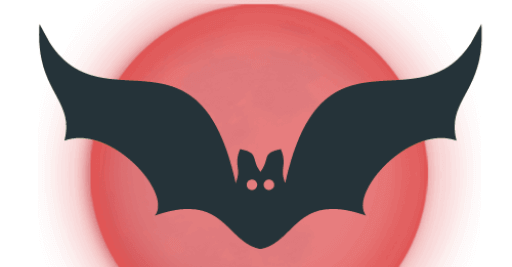Haunted Irish Castles To Stay In Over Halloween
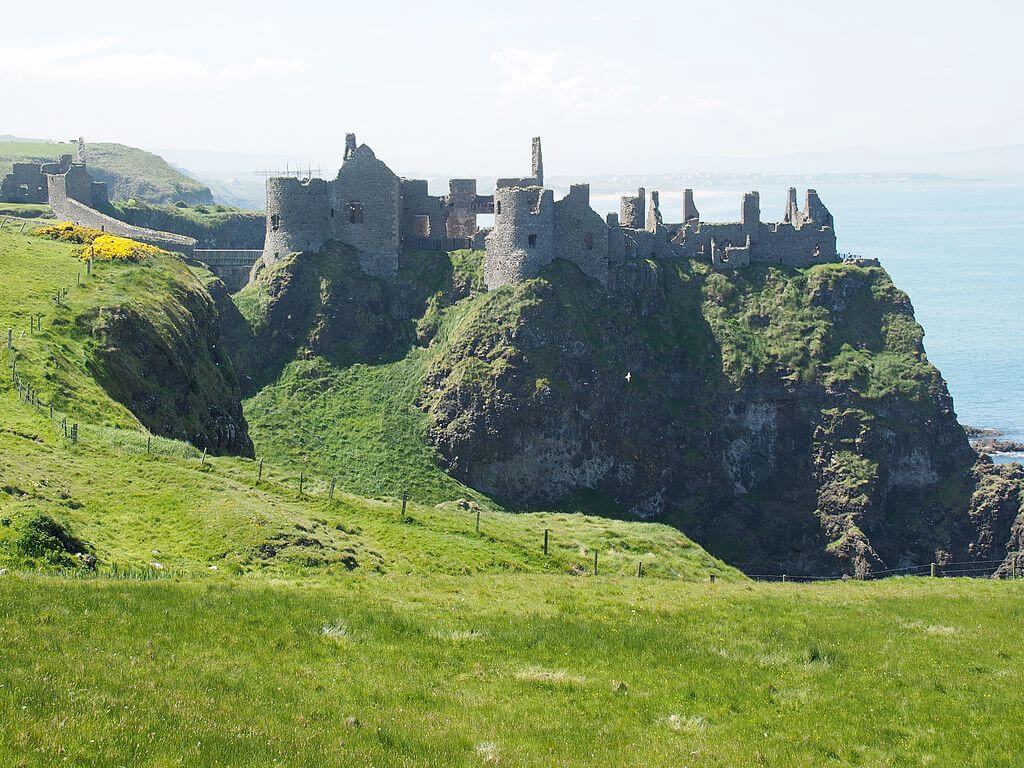
Dunluce Castle (Creative Commons)
Spirits and Banshees of the Emerald Isle
Haunted Irish Castles? Footsteps when there’s no one there, the sound of a piano from another room, odd chills at mid-night, and someone walking through the wall mid-morning, not to mention the banshee’s eerie wail. These are all things that have been experienced, so visitors claim, in the haunted castles of Ireland.
Far be it from me to suggest that these things are true or untrue, but below I have selected four Irish castles that you can actually stay in, or could when I last checked. There are many others but these four are corkers.
The sources for this information are my own personal recollections and travels, reports of visitors culled from the Internet and some reference books. One book worth checking out is Haunted Ireland by Tarquin Blake, or for a purely historical insight, Exploring Ireland’s Castles, by the same author.
Charleville Castle, Tullamore County Offaly

Charleville Castle by Mike Searle
Charleville is the haunted Irish castle I know best, so I will talk about it first.
You can phone the castle ahead of time, or just turn up and, as they say, “Ring the bell for tours!” You may also be able to stay here, as I did, but please enquire in advance.
Charleville is volunteer-run and supported by donations, so, you get a personal feel to the tour. The volunteers are from all over the world but very knowledgable about the castle’s history and its ghosts. Charleville is a very different experience to most of the state-run or luxury castle hotels you might visit.
Charleville is Ireland’s finest gothic revival castle. It is considered to be a masterpiece of Francis Johnston, who designed the GPO in Dublin. The castle was built between 1798 and 1810. The massive dining room was designed by Sir William Morris.
The castle fell into disrepair before the First World War. Things only got worse for the Anglo-Irish family who owned it in the 1920s due to family illness and bereavements and then the conflict of the Irish Civil War. However, for the past twenty or so years has been in the process of restoration by the Charleville Castle Trust and its band of volunteers.
And Charleville is full of hauntings!
Visitors to the castle report seeing glowing fogs, and hearing voices and footsteps. Why is Charleville so haunted? Well, one story goes that the castle was built over top of an ancient druid burial ground, and yet another report says it’s built on a plague pit where people were once buried alive in an attempt to stop the spread of the Bubonic Plague centuries before.
It’s also said that the man who built it practised devil worship (yet another legend!), and his invocation of evil spirits led to the haunted activity in the castle. There are also stories about men going mad and locking children in the basement or the gothic tower.
It could be because of any of these reasons, or it could be that no one really has a clue.
Reports of apparitions are multiple and frequent at Charleville. Some visitors are too scared to sleep in their individual rooms and have, at least once, all laid down together in the Morning Room.
All throughout the night, the restless sleepers heard furniture being mysteriously dragged around in the distance. At about 5 am, one of them felt someone standing beside her as she lay on the sofa. She turned to see a ghostly gentleman at the window beside the piano in a suit and a top hat. He said he would not harm her, but was just curious as to why she and her friends were at Charleville. When the visitor explained, presumably in a whisper to avoid waking her companions, the man vanished. Most rude.
Charleville was a place we used to go to a lot. I loved going there because the owners, Bonnie and Dudley, were so welcoming. The food was indifferent, the plumbing appalling, but the people were terrific.
I remember spending a lovely Halloween at Charleville. We were given one of the rooms in the tall gothic tower. Spending the night there with a log fire burning in the grate, the castle’s black dog Jack lying in front of the fire, a bottle of wine and my family beside me, was pretty close to paradise.
Once when I was there, Bonnie told me the story of how when her son went missing when he was relatively young. She panicked and started looking for him, but when she found him, she said that he told her not to worry — the little girl and boy were looking after him.
The girl and boy were probably Harriet and her unnamed friend. Harriet was the youngest child of the Third Earl of Charleville, and she died in 1861 aged only eight, after falling off a bannister she was sliding down. Visitors often feel Harriet’s presence as they climb the stairs, and many have sighted her translucent form. At times, she is accompanied by a young boy. We don’t know who he is.
Harriet’s sister, Lady Eleanor, lived there alone after the death of her husband, but then she moved to Switzerland. After she departed Charleville, the castle was shut up for fifty years. It was leased to an Englishman in the 1970s.
I had a bizarre encounter with this very man thirty years afterwards. We had come to run a ghost tour at the castle, but after knocking for ages on the massive front door, got no reply. As we walked around the back, we saw a long ladder leading up to a window. Charleville was a very relaxed sort of place, so we didn’t think they’d mind if we climbed up the ladder into the Morning Room.
As I emerged through the window, an Englishman was sitting at a table in the colossal room. In my memory, he is wearing a white tuxedo with the tie rakishly loosened and his shirt collar open. I do remember him drinking a bottle of claret, sitting all alone, sipping from a crystal glass. He didn’t seem surprised to see three men climbing in the window, and he offered us some wine.
He told us he had once owned this castle. As we spoke, he noticed our English accents. “From England, are you?” he said.
We nodded.
He raised an eyebrow. “Have you met many of the Irish?”
We said yes, and Gareth (who was actually Welsh) said how charming everyone had been to us. The man frowned. “Yes, damned charming, the Irish, but don’t trust a single one of them.”
It was like something from Brideshead Revisited. Me, I’ve got Irish blood, and I’m proud of it.
On one stay, I went to the toilet. It wasn’t too late — and I nearly stepped on something. I looked down to see a black cat which promptly vanished.
Why not visit and take a tour?
Bunratty Castle, County Clare
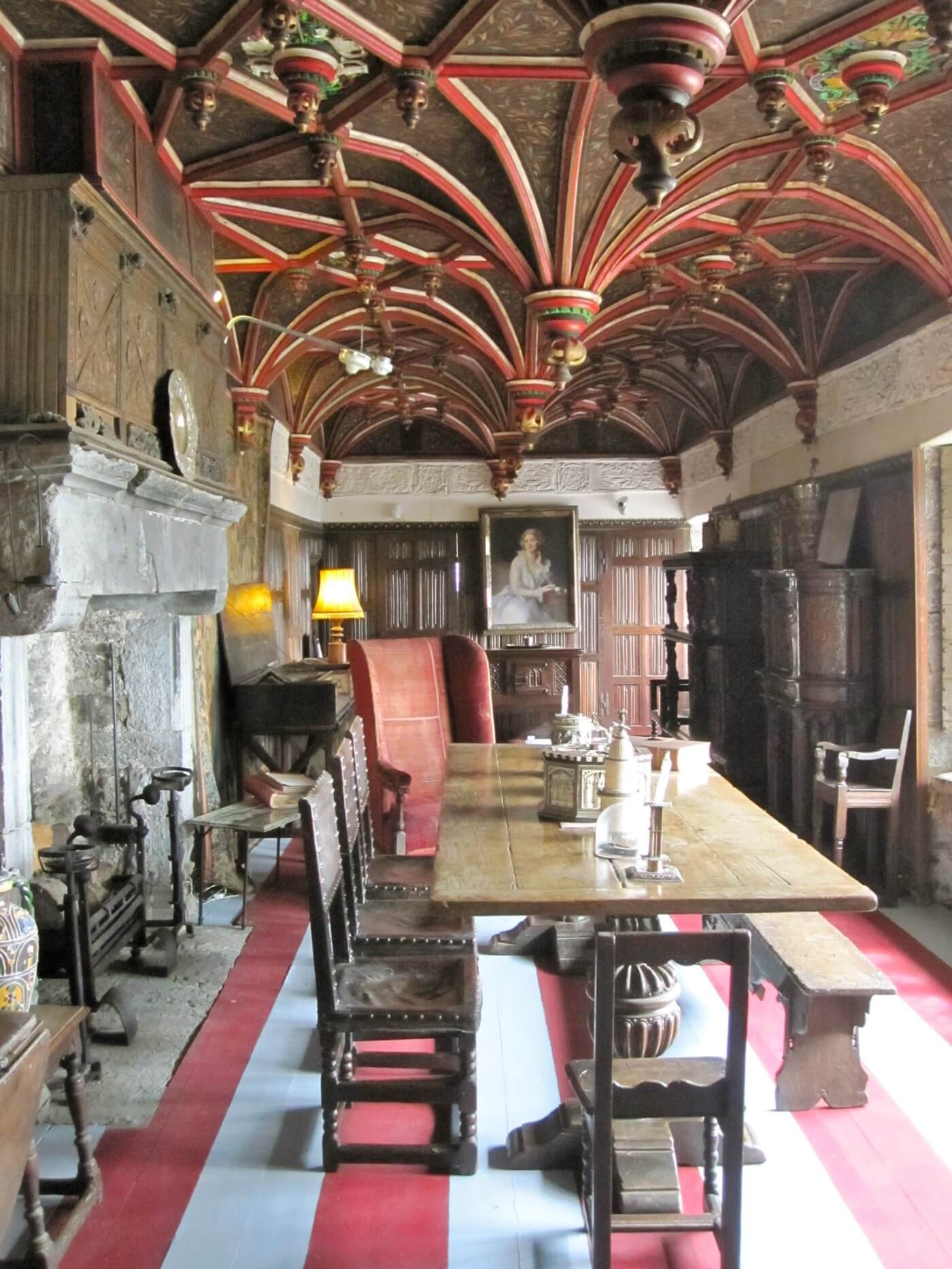
Bunratty Castle (Creative Commons)
Bunratty Castle lies off the N18 between Limerick and Ennis. There is a folk park there to look around, and both the castle and park are run by Shannon Heritage. The castle is beautifully situated and the Ratty river runs beside it.
The first small fort at this site was set up by the Vikings but destroyed by the Irish king Brian Boru in 977 when he drove the Vikings out of Ireland. There is no trace of this original Viking fort. Some reports on the Internet talk about Brian Boru living at Bunratty, but I’m not sure there is any real evidence for that.
The first true castle originated in the grant of King Henry III of England to his follower Robert De Muscegros. Muscegros got the right to hold markets and an annual fair from 1253, which were things the Normans did everywhere they conquered so they could establish trade and wealth. Muscegros’s castle was likely built of wood, a so-called Motte and Bailey Castle, and we have records of the Normans cutting down a lot of trees, probably for this wooden castle.
The stone castle dates from 1277 and the town grew up around it. However, there was constant war between the English occupiers and the native Irish, and Bunratty was attacked many times. The present castle was built by the Irish lords Sioda Cam Macnamara and his son Sean Finn. Bunratty became the most substantial castle in Munster.
In the late thirteenth century, Bunratty town had about 1,000 inhabitants, but after the Norman lord Richard de Clare was killed in 1311, the town of Bunratty was burned to the ground by the local Irish.
The castle later became the property of the O’Briens, who eventually made it their principal seat when they were Earls of Thomond.
Later, by the twists of fate and fortune, Bunratty Castle came into the hands of an Anglo-Irish family called Stoddart in 1720. They lived in the castle itself until they abandoned it in the 19th century and moved into Bunratty House.
By 1845 the castle was a barracks of the Royal Irish Constabulary but around the time of the Great Famine (1845 to 1852), Bunratty town’s population fell into decline.
In the 1950s, Bunratty Castle and its park attracted the attention of John Hunt, who was titled Lord Gort. With aid from the Irish Government, the castle was extensively renovated and opened to the public in 1960. It is now part of the renowned Bunratty Folk Park and is open to the public year-round. Banquets are held in the castle with a four-course meal, wine and music.
Now to the ghosts.
Two friends heard the howling of a ghostly dog. She was convinced the dog was locked in a room, but when they opened the door, guess what — no dog.
A visitor called Nicki visited Bunratty in October 2002 with her husband. She wandered around looking at the rooms and got separated from her husband. She stepped over to the doorway that peered into the dungeon and started in.
Something jumped out at her, and she felt a tremendous wave of energy and then of fear wash over her.
The Earl’s Bedroom, at Bunratty Castle, is said to be the most haunted.
Bunratty is famous for the appearance of the banshee. This Irish spirit (also found in Gaelic Scotland) foretells a death in the family by letting out her famous wail.
A noblewoman, Lady Fanshaw, reported that in 1642, she heard the banshee wail. She was staying at Bunratty as a guest of the O’Briens. She went to bed after a pleasant meal and entertainment, but a terrible screaming woke her in the middle of the night. As she started up from sleep, she beheld a girl floating outside her window. She was a good-looking girl with red hair but in a terribly dishevelled state. This Banshee wailed “ochone!” three times, and in the morning, Lady Fanshaw learned that a cousin of the O’Brian family had died.
According to one version of the story the banshee was the ghost a servant girl who had drowned in the River Ratty.
However, another version of the story says that the Banshee is actually the druidess Aibhill and that Aibhill began wailing the deaths of the local nobility around the time of Brian Boru.
In life, Aibhill was full of magic and was druid to the kings of Dalcassia. These kings were the ancestors of the O’Brien family, the Dukes of Thomond, and that explains why Aibhill came to wail the death of one of their kin in 1642.
While she was alive, Aibhill was said to live in a cave about one mile north of Killaloe in County Clare.
Click here to enquire about staying at Bunratty
Ross Castle, Ross, Mountnugent, County Meath
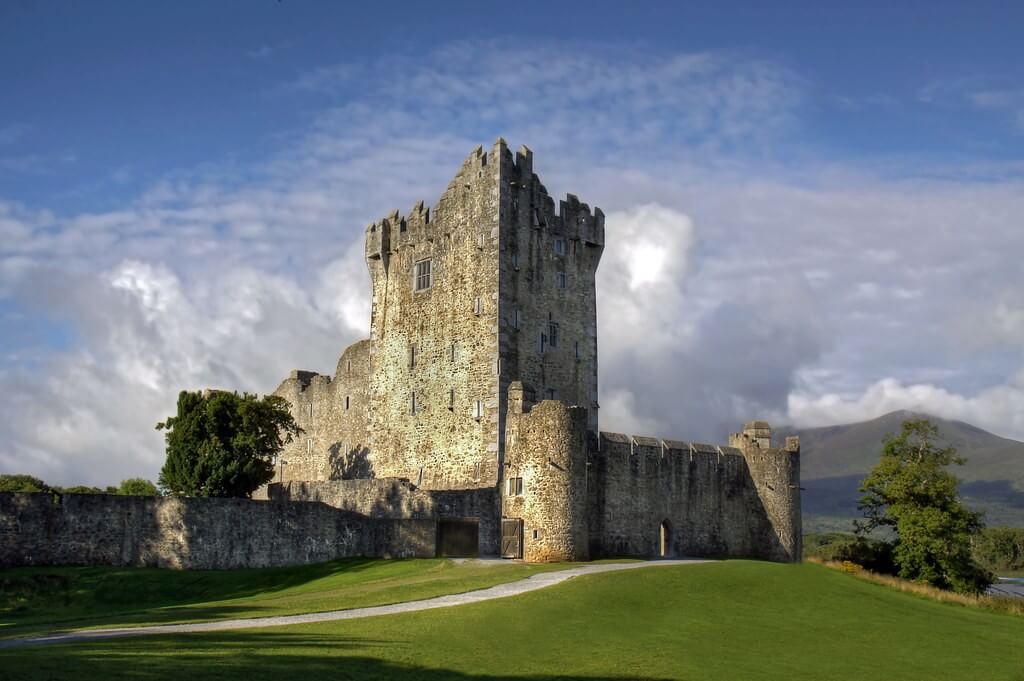
Ross Castle from Wikipedia
This castle in the Irish Midlands overlooks Lough Sheelin, where the River Inny runs into the lake. Ross castle was built in 1533 when Richard de Nugent (or de Nogent) acquired land on the edge of The Pale. The Pale was the area in the east of Ireland controlled by the English. The Irish ruled the north and west of this line. Ross Castle is on the edge of The Pale, looking over to County Cavan.
There are rumours of caverns and tunnels underneath the castle dating back to the time of its construction when stone was cut out to provide material for the walls.
One of Richard de Nugent’s jobs was to maintain his castle and supply soldiers to keep the Irish warlords and clan chiefs from invading and ravaging the Pale. The particular enemies of the De Nugents were the O’Reillys, McCabes, O’Neils and McCormicks.
It was in 1644 that the castle saw one of its fiercest fights. The Irish took the castle, and Myles, “The Slasher”, O’Reilly stayed there before his death at the Battle of Finea. He stood and fought the English troops of Cromwell’s army and fell on the bridge over the River Inny. In retribution, the English reduced Ross Castle to ruins, though it has obviously since been rebuilt.
If you visit Ross Castle, and especially if you stay there, you might see the ghost of The Slasher. The word is that he’s still upset about the defeat so don’t say anything nice about Oliver Cromwell. As if anyone would.
Going back to the first owner, Richard de Nugent, he was known as the Black Baron and renowned for his ferocity and cruelty. He was an evil-tempered man, and there’s a tale to illustrate his vicious nature.
It is said that one summer’s day, a local woman in the village of Ross had been baking bread. She put it on her windowsill to cool, but a dog snatched it. The woman ran after it and scared the dog, so the dog dropped the bread.
Richard de Nugent heard of the theft of bread, but instead of blaming the dog (maybe it was his dog?), he accused a local beggar, who was encamped under a tree, of stealing the bread.
The woman knew a dog had taken the bread, and the beggar denied the crime, but Richard de Nugent thought he’d have some fun with the unfortunate man.
He accused the beggar of lying and hung him from the very tree he had sheltered under. Disgusted, the locals chipped in to build a memorial cross to the poor beggar so cruelly murdered. Not surprisingly the beggar’s ghost haunts the area around the cross to this day.
One of the chambers in the castle you can stay in is called The Whisper Room and those who stay there often wake in the wee hours of the morning to hear ghostly whispering and muttering. The ghosts even have the bad manners to open and then slam shut cupboards, making it yet harder to get a good night’s sleep.
The Black Baron, Richard de Nugent had a beautiful daughter called Sabina. She spent her youth walking on the shores of Lough Sheelin. Despite being one of the English overlords, she grew to be a favourite of the local Irish and was kind to the village folk.
One day, while crossing the bridge over the River Inny, Sabina met a handsome young Irishman. This was Orwin O’Reilly, a nobleman and a member of the O’Reilly clan, a clan particularly hated by her father, the Black Baron.
The story goes the two would meet at first as if by accident, but then when they declared their love, they started to meet in secret, but this was not an acceptable match, either for the O’Reillys or the de Nugents.
The couple decided that they would elope and, one moonless night, Orwin came to fetch Sabina in a rowing boat and they rowed off across Lough Sheelin. But fate was not on their side, and a sudden wind blew in, overtipping the boat. The boat capsized, and the lovers were thrown into the freezing water. Sabina was rescued by the local folk, but Orwin drowned.
Sabina was so heartbroken that she locked herself up in the castle’s tower, and stopped eating and drinking until she died of a broken heart (or more likely dehydration).
You might not be surprised to learn, that the ghost of beautiful dark-haired Sabina haunts this tower to this day. And that, as they say (but often lie about), is a true story! She even has a room named after her, and you can stay in it.
As proof of the ghost, there are the tales of visitors to the castle bumping into a beautiful dark-locked young woman who doesn’t speak and whom they take as one of the family or the staff. It is said Sabina will wander the castle until she is reunited with Orwin. Unfortunately, he’s in the lough.
Even the Black Baron, Richard de Nugent, had a heart at last, and his daughter’s death grieved him so much that he too wanders the castle looking for her. Many guests have seen a noble, but bad-tempered looking man. If you happen to stumble across him, don’t ask him for room service.
The Green Room is said to be most haunted, though we don’t know by whom. It is said that music is heard there when no one is playing, particularly the sound of a harpsichord.
If you want to stay, click here to enquire
Kilkea Castle, Castledermot, County Kildare
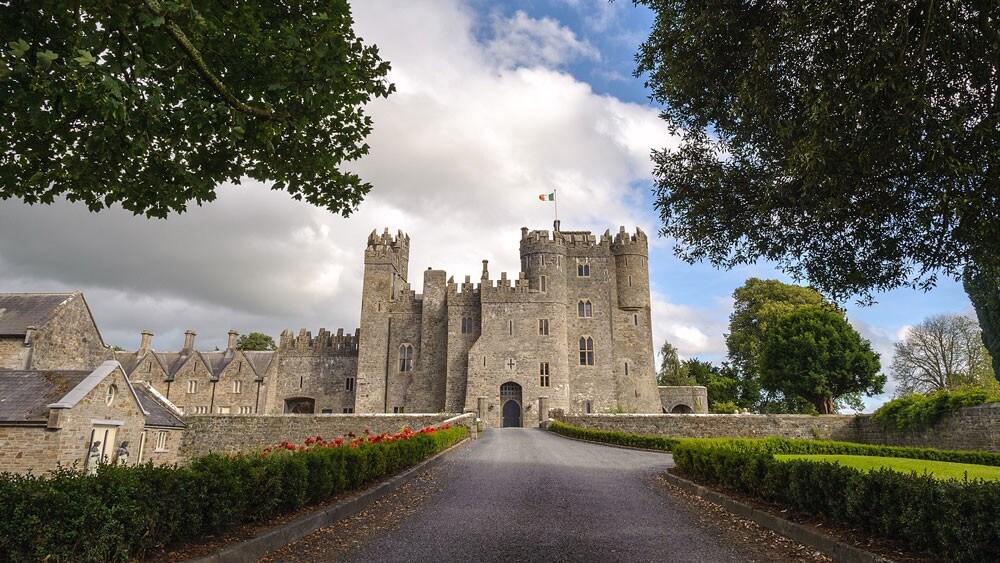
Bruno Sternberger/Kilkea Castle
Kilkea Castle is just outside the village of Castledermot in County Kildare, not so far from Dublin.
Kilkea Castle was built in 1180 and is said to be the oldest continuously inhabited castle in Ireland. It was built by Anglo-Norman settlers to defend the land they had taken. As you approach the modern castle, you will see the forty-foot high tree-covered mound, which was the original Norman motte. It was owned by the Fitzgerald family for over a hundred years.
Despite the best efforts of the Norman invaders, the native Irish didn’t give up easily. In 1414, they besieged the castle, causing the Archbishop of Dublin to raise an army and come in its defence. The Irish were defeated by the bishop at Kilkea with a great slaughter. This pattern of attacks and counter-attacks continued for around four hundred years.
The castle grounds are supposed to be haunted by the son of Silken Fitzgerald who was called Gerald the Wizard Earl.
The legend claims the Wizard Earl’s ghost will rise eventually from the Rath of Mullaghmast, near Ballitore, to free Ireland from her enemies. While he’s waiting for that big job, he wakes every seven years and rides a horse with silver horseshoes. When these horseshoes have worn right down, that is the time when he will return to defeat Ireland’s enemies.
The interesting thing is the Earl is buried in London.
In 1969 the castle was one of the first in the world to offer ghost tours. It is said that the ghost of a young man haunts the castle, continually searching the corridors to find the love he was forbidden to see.
One of the towers is known as the “Haunted Tower”, and a feature of supernatural interest is the so-called “Evil Eye Stone”. This is a carved stone about seventeen feet up on a wall near what was the Guard Room.
The custom of putting up images to repulse evil is well known from Ireland and elsewhere. This stone shows two monsters fighting — one appears to be a werewolf, and the other some kind of gargoyle headed man.
You can get a ghost tour at Kilkea Castle. The tour starts in the old nursey and here you can see, if you’re lucky, the ghost of a little girl and hear her laughter and running footsteps.
If you stay there overnight, she may even pull your bedcovers off you.
There is also a stableboy, who had the bad luck to be found in the bedroom of one of the noble girls. That never goes down well. If they’d hang you for stealing a loaf of bread, it’s bound to be a stronger punishment for deflowering one of the flowers of their family honour. It’s said they hung the poor stable lad. He probably got off lightly considering what they might have cut off before he died.
But the prize ghost is that of the Wizard Earl himself. Gerald Fitzgerald was the Eleventh Earl of Kildare, and in common with many learned men of the 16th century, he was keen on alchemy.
Nothing wrong with that, you may say, for Sir Isaac Newton liked a dabble with the alembics and Bunsen burners himself. But The Wizard Earl also tried a touch of magic.
Apparently, he was showing off his magical powers of transmutation when he turned himself into a blackbird in front of his wife.
Unfortunately, Gerald overlooked the fact that his wife’s favourite tabby cat was on her knee. Before she could say, “That’s very clever, Gerald!” the tabby cat sprang up and ate The Wizard Earl. Presumably, that’s why he’s a ghost now, but even five hundred years after being gobbled up by the pet moggy, he still hangs around his spell room. That’s the room at the top of the spiral stairs.
Whether this is true or not, no one dares use the so-called Haunted Room for anything, and it has remained empty all these long years.
There is a Woman in White too. There’s usually a Woman in White. Women in White are common at haunted sites and very often pals with the Grey Lady and the Headless Horseman.
Kilkea’s Woman in White flits around the courtyard outside, where she has the useful skill of being able to walk through stone walls. I wish I could do that. I can’t at present, but you never know, maybe one day I will be able to. I may even wear white.
Click here to enquire about staying at Kilkea
Plenty Of Choices
So that’s just four of Ireland’s remarkable, historic and haunted castles. So, if you find yourself on the Emerald Isle, and it’s Halloween, or to be honest, any other time of the year, why not visit one or more of the castles mentioned above? Mention my name in case they feel like offering me a free stay.
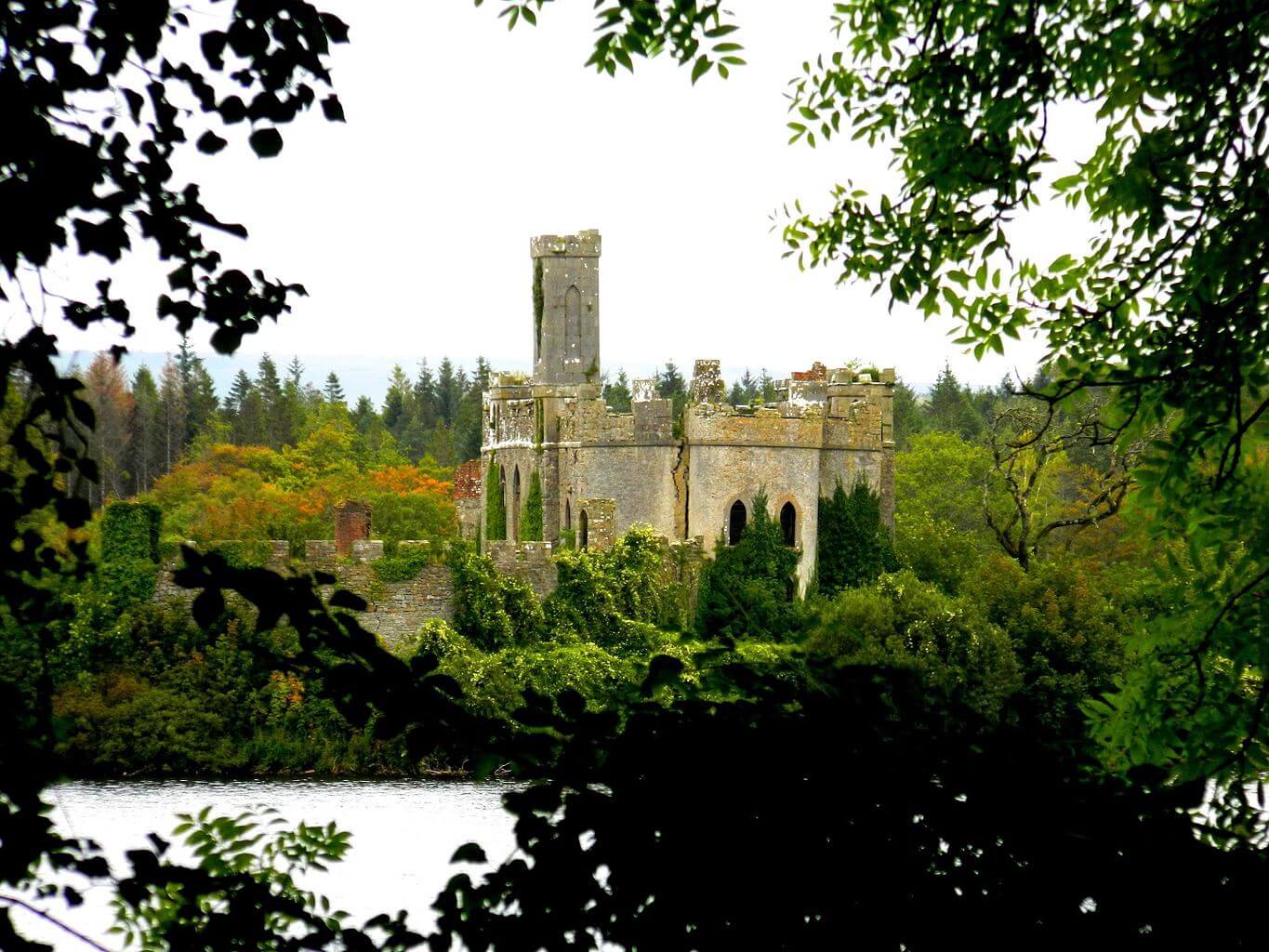
Lough Key Castle (Creative Commons)
